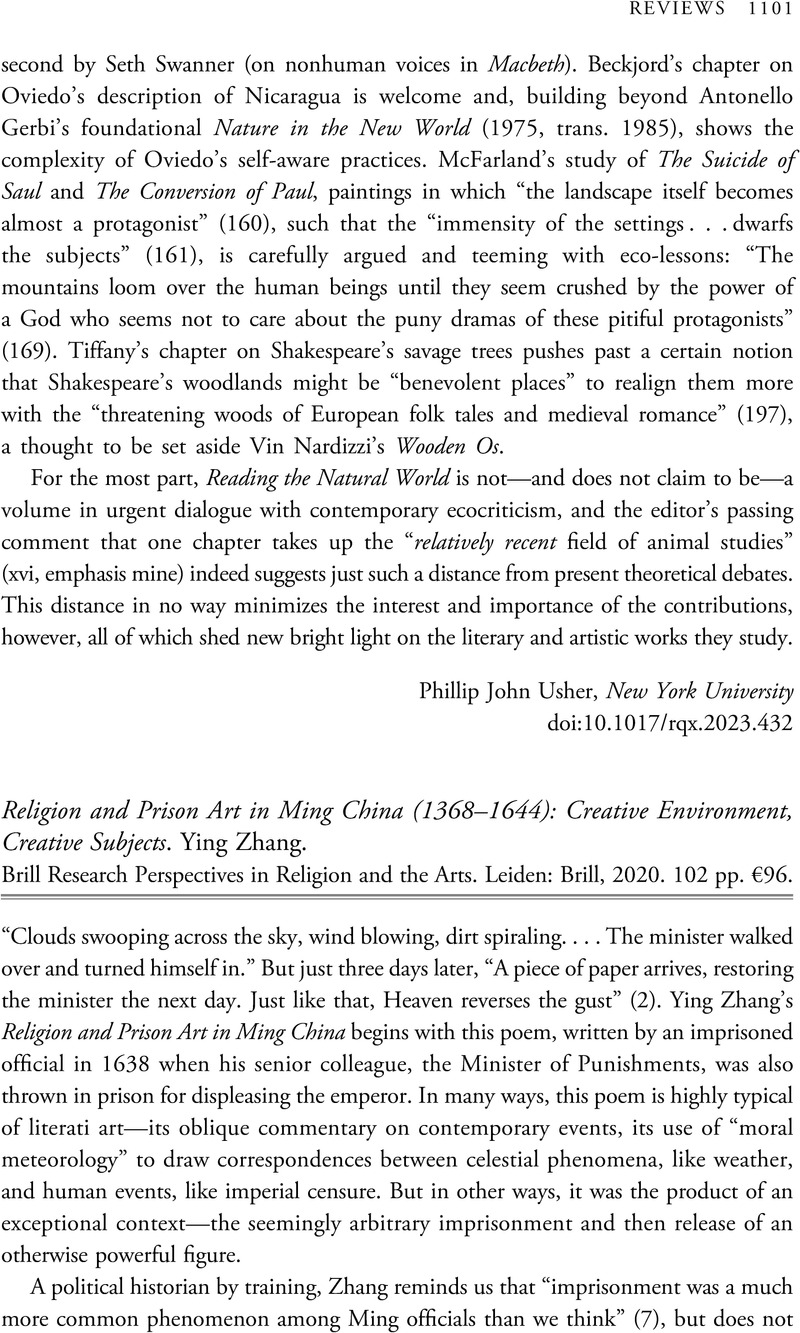No CrossRef data available.
Article contents
Religion and Prison Art in Ming China (1368–1644): Creative Environment, Creative Subjects. Ying Zhang. Brill Research Perspectives in Religion and the Arts. Leiden: Brill, 2020. 102 pp. €96.
Review products
Religion and Prison Art in Ming China (1368–1644): Creative Environment, Creative Subjects. Ying Zhang. Brill Research Perspectives in Religion and the Arts. Leiden: Brill, 2020. 102 pp. €96.
Published online by Cambridge University Press: 15 November 2023
Abstract
An abstract is not available for this content so a preview has been provided. Please use the Get access link above for information on how to access this content.

Information
- Type
- Review
- Information
- Copyright
- Copyright © The Author(s), 2023. Published by the Renaissance Society of America


